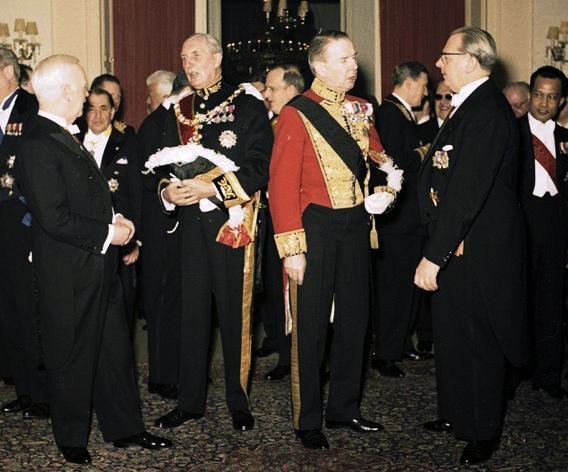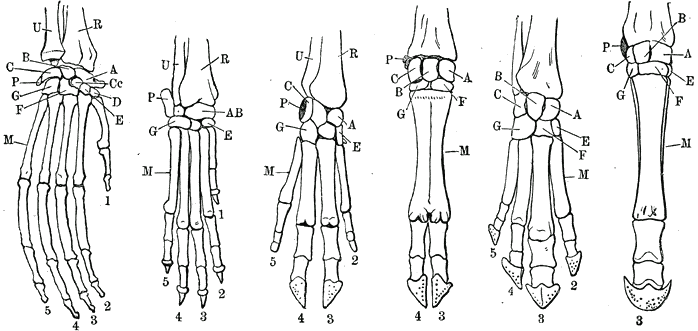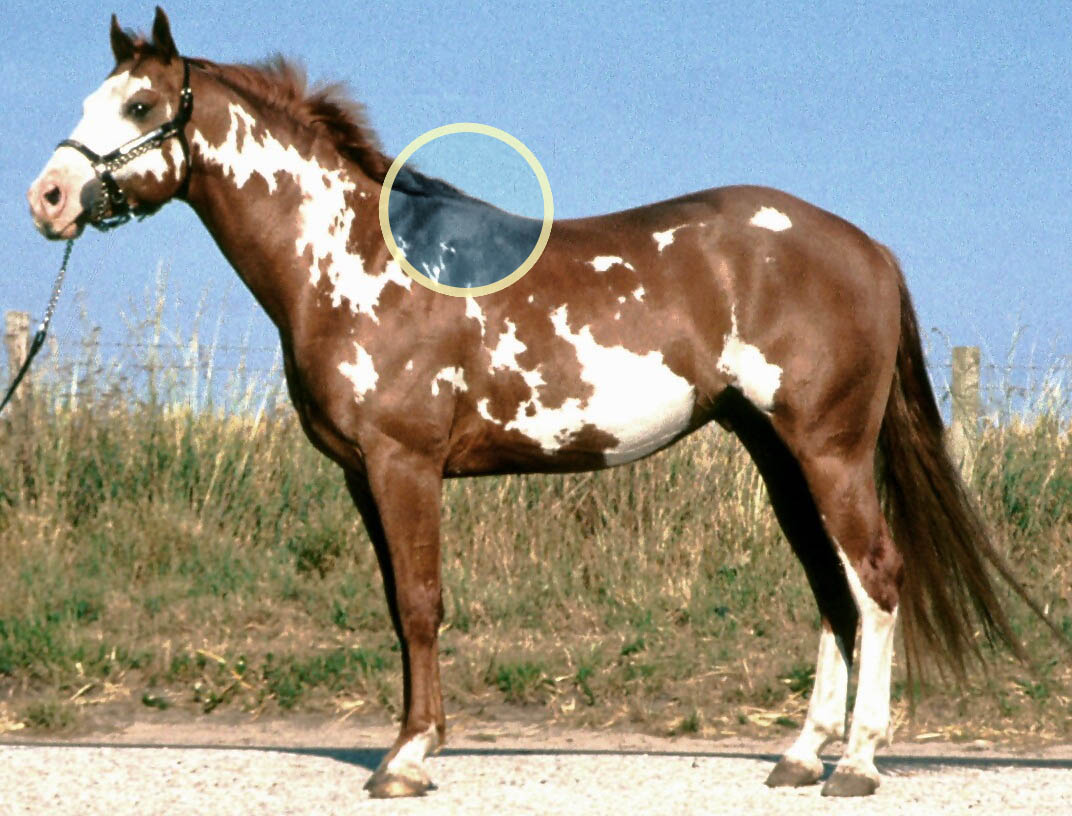|
Boston Terrier
The Boston Terrier is a breed of dog originating in the United States of America. This "American Gentleman" was accepted in 1893 by the American Kennel Club as a non-sporting breed. Color and markings are important when distinguishing this breed from the AKC standard. They should be either black, brindle or seal with white markings. Boston Terriers are small and compact with a short tail and erect ears. The AKC says they are highly intelligent and very easily trained. They are friendly and can be stubborn at times. The average life span of a Boston Terrier is around 11 to 13 years. The American Kennel Club ranked the Boston Terrier as the 21st most popular breed in 2019. History The Boston terrier breed originated around 1875, when Robert C. Hooper of Boston purchased from Edward Burnett a dog named Judge (known later as Hooper's Judge), which was of a bull and terrier type lineage. Hooper's Judge is directly related to the original bull and terrier breeds of the 19th and earl ... [...More Info...] [...Related Items...] OR: [Wikipedia] [Google] [Baidu] |
United States
The United States of America (U.S.A. or USA), commonly known as the United States (U.S. or US) or America, is a country primarily located in North America. It consists of 50 states, a federal district, five major unincorporated territories, nine Minor Outlying Islands, and 326 Indian reservations. The United States is also in free association with three Pacific Island sovereign states: the Federated States of Micronesia, the Marshall Islands, and the Republic of Palau. It is the world's third-largest country by both land and total area. It shares land borders with Canada to its north and with Mexico to its south and has maritime borders with the Bahamas, Cuba, Russia, and other nations. With a population of over 333 million, it is the most populous country in the Americas and the third most populous in the world. The national capital of the United States is Washington, D.C. and its most populous city and principal financial center is New York City. Paleo-Americ ... [...More Info...] [...Related Items...] OR: [Wikipedia] [Google] [Baidu] |
Patella
The patella, also known as the kneecap, is a flat, rounded triangular bone which articulates with the femur (thigh bone) and covers and protects the anterior articular surface of the knee joint. The patella is found in many tetrapods, such as mice, cats, birds and dogs, but not in whales, or most reptiles. In humans, the patella is the largest sesamoid bone (i.e., embedded within a tendon or a muscle) in the body. Babies are born with a patella of soft cartilage which begins to ossify into bone at about four years of age. Structure The patella is a sesamoid bone roughly triangular in shape, with the apex of the patella facing downwards. The apex is the most inferior (lowest) part of the patella. It is pointed in shape, and gives attachment to the patellar ligament. The front and back surfaces are joined by a thin margin and towards centre by a thicker margin. The tendon of the quadriceps femoris muscle attaches to the base of the patella., with the vastus intermedius muscle ... [...More Info...] [...Related Items...] OR: [Wikipedia] [Google] [Baidu] |
Tire Jump
A tire (American English) or tyre (British English) is a ring-shaped component that surrounds a wheel's rim to transfer a vehicle's load from the axle through the wheel to the ground and to provide traction on the surface over which the wheel travels. Most tires, such as those for automobiles and bicycles, are pneumatically inflated structures, which also provide a flexible cushion that absorbs shock as the tire rolls over rough features on the surface. Tires provide a footprint, called a contact patch, that is designed to match the weight of the vehicle with the bearing strength of the surface that it rolls over by providing a bearing pressure that will not deform the surface excessively. The materials of modern pneumatic tires are synthetic rubber, natural rubber, fabric, and wire, along with carbon black and other chemical compounds. They consist of a tread and a body. The tread provides traction while the body provides containment for a quantity of compresse ... [...More Info...] [...Related Items...] OR: [Wikipedia] [Google] [Baidu] |
Newborn Boston Terrier Puppy (November 2006)
An infant or baby is the very young offspring of human beings. ''Infant'' (from the Latin word ''infans'', meaning 'unable to speak' or 'speechless') is a formal or specialised synonym for the common term ''baby''. The terms may also be used to refer to juveniles of other organisms. A newborn is, in colloquial use, an infant who is only hours, days, or up to one month old. In medical contexts, a newborn or neonate (from Latin, ''neonatus'', newborn) is an infant in the first 28 days after birth; the term applies to premature, full term, and postmature infants. Before birth, the offspring is called a fetus. The term ''infant'' is typically applied to very young children under one year of age; however, definitions may vary and may include children up to two years of age. When a human child learns to walk, they are called a toddler instead. Other uses In British English, an ''infant school'' is for children aged between four and seven. As a legal term, ''infancy'' is more lik ... [...More Info...] [...Related Items...] OR: [Wikipedia] [Google] [Baidu] |
Formal Wear
Formal wear or full dress is the Western dress code category applicable for the most formal occasions, such as weddings, Baptism, christenings, confirmations, funerals, Easter traditions, Easter and Christmas traditions, in addition to certain state dinners, Audience (meeting), audiences, Ball (dance party), balls, and horse racing events. Formal wear is traditionally divided into formal day and evening wear, implying morning dress (morning coat) before 6 p.m., and white tie (dress coat) after 6 p.m. Generally permitted other alternatives, though, are the most formal versions of ceremonial dresses (including court dresses, diplomatic uniforms and academic dresses), full dress uniforms, religious clothing, national costumes, and most rarely frock coats (which preceded morning coat as default formal day wear 1820s-1920s). In addition, formal wear is often instructed to be worn with official full size order (distinction), orders and medals. The Etiquette, protocol indicating partic ... [...More Info...] [...Related Items...] OR: [Wikipedia] [Google] [Baidu] |
Conformation Show
A dog show is an event where dogs are exhibited. A conformation show, also referred to as a ''breed show'', is a kind of dog show in which a judge, familiar with a specific dog breed, evaluates individual purebred dogs for how well the dogs ''conform'' to the established breed type for their breed, as described in a breed's individual breed standard. Such shows are useful to breeders as a means of evaluating dogs for breeding purposes. A conformation championship from a recognised national kennel club is generally considered a reasonably objective indication of merit, as it indicates that the dog has been found to be a superior example of its breed by a number of different judges on a number of separate occasions. Many breeders consider championship a prerequisite for breeding. Conformation shows have been controversial, as critics argue that the shows encourage selective breeding of traits and lower genetic diversity, which reduces the health, happiness and longevity of the do ... [...More Info...] [...Related Items...] OR: [Wikipedia] [Google] [Baidu] |
Hind Limb
A hindlimb or back limb is one of the paired articulated appendages (limbs) attached on the caudal ( posterior) end of a terrestrial tetrapod vertebrate's torso.http://www.merriam-webster.com/medical/hind%20limb, Merriam Webster Dictionary-Hindlimb With reference to quadrupeds, the term hindleg or back leg is often used instead. In bipedal animals with an upright posture (e.g. humans and some primates), the term lower limb is often used. Location It is located on the limb of an animal. Hindlimbs are present in a large number of quadrupeds. Though it is a posterior limb, it can cause lameness in some animals. The way of walking through hindlimbs are called bipedalism. Benefits of hindlimbs Hindlimbs are helpful in many ways, some examples are: Frogs Frogs can easily adapt at the surroundings using hindlimbs. The main reason is it can jump high to easily escape to its predator and also to catch prey. It can perform some tricks using the hindlimbs such as the somersault and h ... [...More Info...] [...Related Items...] OR: [Wikipedia] [Google] [Baidu] |
Hock (zoology)
The hock, or gambrel, is the joint between the tarsus (skeleton), tarsal bones and tibia of a digitigrade or Ungulate, unguligrade quadrupedal mammal, such as a horse, cat, or dog. This joint may include articulations between tarsal bones and the fibula in some species (such as cats), while in others the fibula has been greatly reduced and is only found as a Vestigiality, vestigial remnant fused to the distal portion of the tibia (as in horses).{{citation needed, date=January 2016 It is the anatomical Homology (biology), homologue of the ankle of the human foot. While homologous joints occur in other tetrapods, the term is generally restricted to mammals, particularly long-legged domestic animals, domesticated species. Horse Although the ''tarsus'' refers specifically to the bones and joints of the hock, most people working with horses refer to the ''hock'' in such a way to include the bones, joints, and soft tissue of the area. The hock is especially important in equine anatomy, ... [...More Info...] [...Related Items...] OR: [Wikipedia] [Google] [Baidu] |
Forelimb
A forelimb or front limb is one of the paired articulated appendages (limbs) attached on the cranial ( anterior) end of a terrestrial tetrapod vertebrate's torso. With reference to quadrupeds, the term foreleg or front leg is often used instead. In bipedal animals with an upright posture (e.g. humans and some primates), the term upper limb is often used. A forelimb is not to be confused with a forearm, which is a distal portion of the human upper limb between the elbow and the wrist. All vertebrate forelimbs are homologous, meaning that they all evolved from the same structures. For example, the flipper of a turtle or of a dolphin, the arm of a human, the foreleg of a horse, and the wings of both bats and birds are ultimately homologous, despite the large differences between them. Specific uses of the forelimbs may be analogous if they evolved from different sub-structures of the forelimb, such as the flippers of turtles and dolphins, and the wings of birds and bats. Evolu ... [...More Info...] [...Related Items...] OR: [Wikipedia] [Google] [Baidu] |
Withers
The withers is the ridge between the shoulder blades of an animal, typically a quadruped. In many species, it is the tallest point of the body. In horses and dogs, it is the standard place to measure the animal's height. In contrast, cattle are often measured to the top of the hips. The term (pronounced ) derives from Old English ''wither'' (“against”), because it is the part of a draft animal that pushes against a load. Horses The withers in horses are formed by the dorsal spinal processes of roughly the 3rd through 11th thoracic vertebrae, which are unusually long in this area. Most horses have 18 thoracic vertebrae. The processes at the withers can be more than long. Since they do not move relative to the ground as the horse's head does, the withers are used as the measuring point for the height of a horse. Horses are sometimes measured in hands – one hand is . Horse heights are extremely variable, from small pony breeds to large draft breeds. The height at the ... [...More Info...] [...Related Items...] OR: [Wikipedia] [Google] [Baidu] |
Canadian Kennel Club
The Canadian Kennel Club (or CKC), founded in 1888 and chartered under the Animal Purebred Act, is one of the national kennel clubs of Canada. It maintains breed registries services for those purebred dogs approved for its control by Agriculture and Agri-Food Canada, and provides governance for all CKC-approved dog conformation shows, dog trials and canine events. The CKC is a non-member partner with the Fédération Cynologique Internationale. See also *List of kennel clubs A kennel club (known as a kennel council or canine council in some countries) is an organization for canine affairs that concerns itself with the breeding, showing and promotion of more than one breed of dog. All-encompassing kennel clubs are a ... References External links * Kennel clubs Animal charities based in Canada {{Dog-stub ... [...More Info...] [...Related Items...] OR: [Wikipedia] [Google] [Baidu] |
.jpg)






